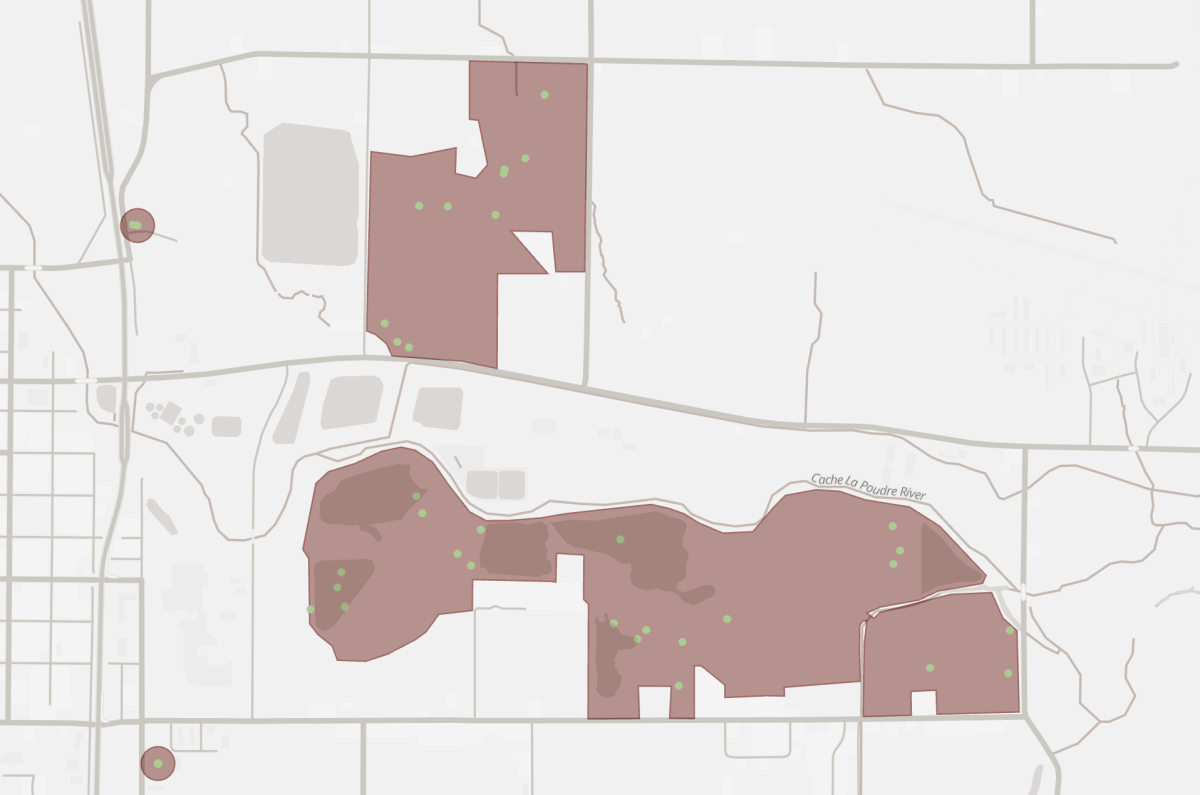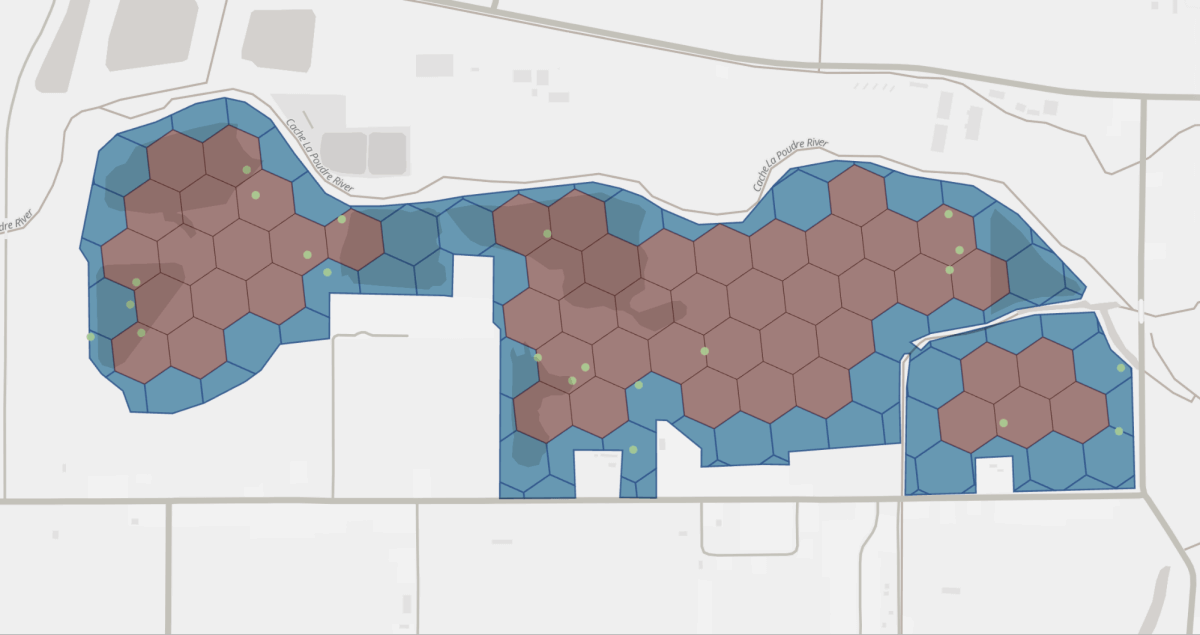Managing high-value gear deployed throughout operational websites is a standard problem for development corporations. In response, many unique gear producers are connecting gear with the Web of Issues, creating new alternatives for digital options that drive effectivity throughout the undertaking lifecycle. In response to a 2017 report by McKinsey, technology-driven options may enhance cross-industry productiveness by as a lot as 60%. Understanding the real-time distribution of apparatus may also help fleet managers cut back downtime and enhance gear utilization. By leveraging GPS monitoring and geospatial analytics, firms could make data-driven selections about gear deployment, upkeep scheduling, and useful resource allocation throughout work websites.
Delivering real-time outcomes leveraging geospatial information could be troublesome and requires advanced processing. One frequent problem is figuring out if an asset is working inside a jobsite. Databricks presents the flexibility to combine a number of geospatial capabilities collectively in Delta Stay Tables to stream outcomes from point-in-polygon lookups over hundreds of web sites. Utilizing product APIs for H3 geospatial indexing in addition to Spatial Temporal (ST) capabilities, at the moment in preview, we will implement the point-in-polygon geospatial “hybrid” be part of sample to map gear areas to particular operational websites with nice scalability and accuracy. As soon as an gear or fleet supervisor has a view of every asset’s location, they will calculate statistical insights or reviews to assist them drive environment friendly upkeep scheduling, cut back transit and downtime, or dispatch gear to under-resourced areas.
What’s H3?
H3 is an open-source geospatial indexing system that divides the Earth into uniform hexagonal cells, every with a singular identifier. Its precision and excessive scalability makes it splendid for geospatial information evaluation.
Key Options of H3:
- Hexagonal Grid System: Makes use of hexagons as a substitute of squares, guaranteeing higher spatial relationships, minimal distortion, and constant space protection.
- Hierarchical Construction: Helps 16 resolutions (0–15), the place every stage subdivides a hexagon into roughly seven smaller ones, enabling various precision.
- Environment friendly Spatial Operations: Simplifies spatial joins, nearest neighbor searches, and point-in-polygon calculations by utilizing cell IDs as a substitute of advanced geometries.
Earlier than we check out an instance DLT pipeline, let’s visualize our gear areas and operational website boundaries. The factors symbolize our gear, the polygons are jobsites, and upkeep websites are circles.

Delta Stay Tables Pipeline Overview
This DLT pipeline creates an hourly streaming calculation that reveals the proportion of complete belongings deployed to a jobsite, upkeep website, or in transit between websites. This can permit us to watch the general utilization of our gear fleet.
Desk 1: Final Hourly Tools Location
Our first streaming desk teams GPS monitoring information into hourly home windows and selects the final identified latitude and longitude place for each bit of apparatus.
Desk 2: Level-in-Polygon Be a part of with H3 And Spatial Temporal Capabilities
Now that now we have the final location of every asset per hour, we will implement the point-in-polygon be part of sample utilizing H3 geospatial indexing to map our belongings onto operational websites. As well as, we’re utilizing a set of ST capabilities additionally offered by Databricks.
Right here’s how the code works.
H3 Indexing: Getting ready Knowledge for Geospatial Joins
Step one is to assign H3 indices to each the GPS coordinates of belongings and the polygon boundaries representing operational websites.
- Decision Choice: Decrease resolutions with bigger cells could cut back compute necessities whereas larger resolutions with smaller cells enhance precision. In our instance, we selected decision 11, which is roughly 2,150 sq. meters and aligns with the extent of element required for our evaluation.
- Indexing GPS Factorss: Convert the latitude and longitude of every asset’s location into an H3 cell ID utilizing h3_longlatash3.

Determine 2: H3 cells assigned to asset areas (darkish purple hexagon). - Indexing Web site Boundaries: Tessellate every website’s geometry into the set of H3 cells protecting the polygon utilizing h3_tessellateaswkb. This perform returns an array with 3 items of data:
- “cellid” – H3 cell id(entifier)
- “core” – Categorizes cells as:
- Core = true: Cell is absolutely contained inside the website boundary.
- Core = false (Boundary): Cell is partially overlapping with the location boundary.
- “chip” – Geometry representing the intersection or overlap space of the polygon website and H3 Cell.

Determine 3: Operational websites tesselated with H3 cells (Left). Tesselated core cells (purple) vs boundary cells (blue). 
Determine 4: A single website, “Core” H3 cells (purple) and website boundary “chips” (blue).
Be a part of Operation: Effectively Mapping Belongings to Websites
The subsequent step is to carry out a be part of operation between the belongings and websites based mostly on their H3 cell ID:
- Left Be a part of: Match asset areas with websites utilizing H3 cells.
- Belongings situated at an operational website.
- Belongings at a upkeep website.
- Belongings in transit (site_type = null).
- The place: If the “cellid” is a core cell (core = true) we all know the cell is absolutely contained inside the website boundary and doesn’t require any additional processing.
Becoming a member of on H3 cell ID removes the necessity for operating a compute intensive geospatial operation on each document.
Exact Geometric Verify for Boundary Cells – The Hybrid Strategy
Cells categorized as boundary (core = false) require a exact geometric verify as a result of the h3 cell will not be utterly inside the website geometry. We are able to carry out the point-in-polygon verify utilizing st_contains. This ensures that solely factors actually inside the location boundary are included within the be part of outcomes, eliminating false positives attributable to the granularity of the decision.


Desk 3: Asset Distribution Throughout Websites
Lastly, for the final streaming desk in our DLT pipeline, we calculate the distribution of belongings throughout completely different website sorts. We use a choose expression to rely the overall variety of belongings per window, the belongings at every site_type, and eventually a proportion of the overall belongings reporting telemetry in every hourly window.
By combining Delta Stay Tables with H3 geospatial indexing, Spatial Temporal capabilities, and the point-in-polygon “hybrid” be part of sample, we will effectively map gear areas to operational websites and calculate fleet distribution metrics. This method simplifies spatial operations whereas sustaining accuracy, making it splendid for real-time geospatial analytics at scale in industries like development.
Take a look at our upcoming blogs on this sequence protecting real-time monitoring of landmark entries and exits with stateful streaming and “geospatial agent”, which integrates geospatial intelligence into Mosaic AI Agent framework for real-time supply monitoring.
To be taught extra concerning the origins of Geospatial Analytics with H3 on Databricks, try Spatial Analytics at Any Scale With H3 and Photon. And keep tuned for developments round Databricks help for ST capabilities in addition to geometry and geography sorts.


